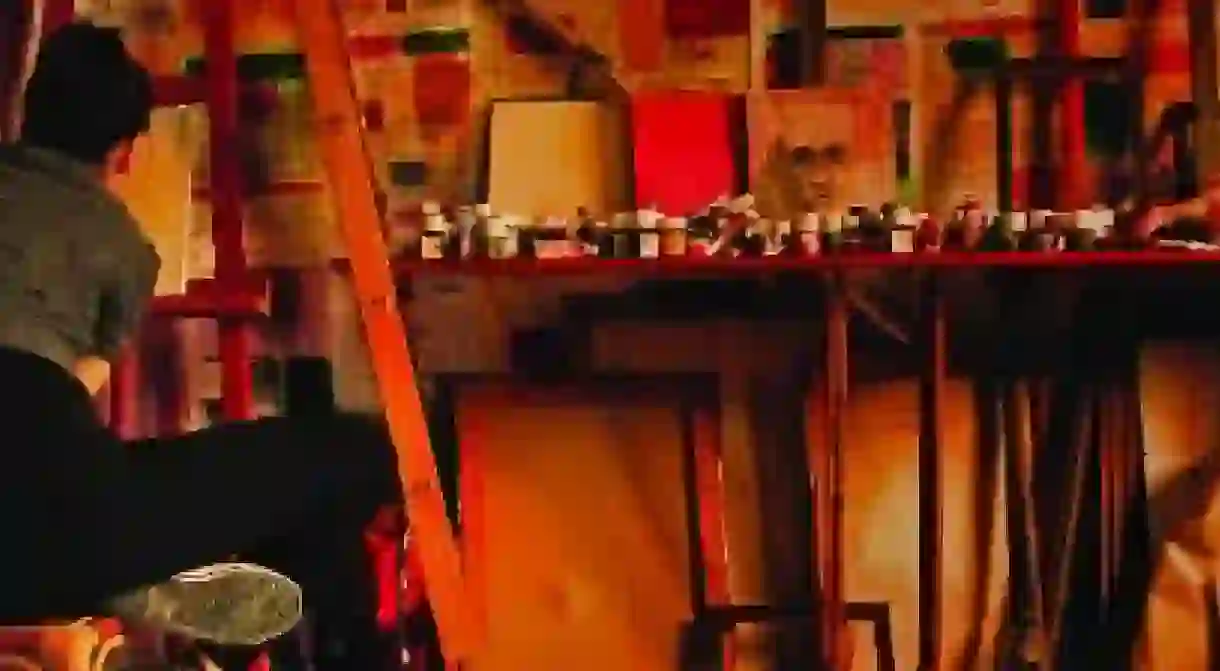Nidaa Badwan: A Contemporary Palestinian Artist From Gaza

In recent months, the work of Nidaa Badwan, a contemporary artist from Gaza, has garnered a large amount of international attention. Culture Trip zeroes in on her latest work while also keeping her broader artistic motivations in focus.

Nidaa Badwan’s recent photographic series was created as part of a project entitled One Hundred Days of Solitude made possible by the financial, technical and organizational support of the French Institute of Jerusalem. This exhibit has not only been presented in East Jerusalem at the Palestinian Art Court Al Hoash and at French Institute antennas across Palestinian Territories, but has also attracted both favorable reviews in the international press and scholarly reflection on the larger context this exhibition creatively engages.

Though the lens of her camera, Badwan invites her viewers to peer into the confined space of her bedroom, where she remained secluded for over 100 days in 2014. Composed solely of self-portraits, this series of art works represents the artist’s vibrant interior world in isolation from the destruction realized in her city during the most recent Israeli-Palestinian conflict. The dialectics of revelation and concealment add to these depictions of everyday life that celebrate the mundane aspect of this artist’s existence.

These self-consciously and self-referentially staged scenes of the interior world of the artist lay claim to normalcy within daily life. In doing so, these photographic prints forge a connection both to European art history, such as Dutch painterly depictions of bourgeois domesticity from the 16th and 17th century, and to theoretical reflections on the presence of the gaze in the pictorial space. As opposed to Édouard Manet’s Olympia, whose female character impudently turns her gaze to the viewer, the gaze of Nidaa Badwan in her photographs is constantly averted and never meets the eye of any intended spectator, male or a female.

Instead of using a gaze to establish a connection with the viewers, these photographs establish a dialogue with their audience through implied layers of social, cultural and political realities that allow for various local, regional and international interpretations. For instance, these works were featured early this year at the Palestinian Art Court Al Hoash Gallery in the context of addressing the nexus of interrelations between domination, collective memory and visual arts. Guided by Édouard Glissant’s reflections about subaltern history, the Palestinian Art Court Al Hoash hosts exhibitions by Palestinian and international artists whose works make connections between cultural, social and political domination and art.

Evincing her scholarly training at the Al-Aqsa University Department of Fine Arts, Badwan’s thorough knowledge of both classical and modern European art are referenced in her compositionally complex photographic works. Just as Nidaa Badwan transposes the fragments of Palestinian reality into works of art, an essay by Marion Slitine that is included in the catalog for this exhibition explores the existential dimensions of the solitary everyday life scenes in which Badwan is a protagonist.

Turning the objectifying power of artistic representation upon herself, Badwan also portrays private life as a source of individual empowerment. In Badwan’s early life, she was displaced from her birthplace of Abu Dhabi and ended up in Gaza City, where she has lived since 1998. This photographic series also echoes important literature, including Gabriel García Márquez’s One Hundred Years of Solitude in its stress upon creative imagination as a means of dealing with the fortune and misfortune that collective and individual destiny bring.

Due to both Badwan’s strong artistic knowledge and skill as well as Gaza’s near-constant presence in the news, the artist’s individual search for humanity in the constrained circumstances of her private domicile has gained resonance in both international and regional media. However, without the local presence of international institutions (such as the French Institute in Gaza) acting as cultural mediators between Palestinian artists and global audiences, this artist’s access to the international world of contemporary art would have been of limited scope.

The work of this young Palestinian artist has also gained important regional and international recognition due to the efforts of local cultural mediators, including Alia Rayyan of the Palestinian Art Court Al Hoash. Founded in 2004, the Palestinian Art Court Al Hoash is an innovative non-profit cultural organization that promotes local and international collaboration on artistic projects from the West Bank and Gaza.
Due to the many organizations invested in Badwan’s artistic expression of isolation in Gaza, perhaps we can view her works as showing the globalization of Palestinian contemporary art as a process that addresses local cultural, political and social contradictions in a multifaceted way.














